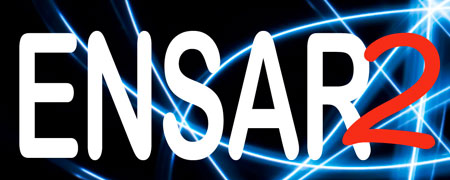RESIST : RESonance laser Ionisation Techniques for separators
WP Leader: Iain Moore
Deputy: Valentin Fedosseev
The Joint Research Activity (JRA), RESIST, aims to refine the highly successful Resonance Ionization Laser Ion Source (RILIS), In-Gas Laser Ionization and Spectroscopy (IGLIS) and Laser Ion Source Trap (LIST) technologies, coupled to hot cavity or to gas cells at on-line facilities for the production and study of radioactive ion beams (RIBs). In this manner, RIBs of the highest purity regarding selection of isobaric as well as isomeric species will be obtained, which are indistinguishable for conventional mass spectrometers. The research will, for the first time, jointly address both ISOL AND In-Flight facilities. Through this approach, dedicated studies on the shortest-lived exotic and refractory isotopes far from stability become possible. Laser spectroscopic studies of exceptional sensitivity are anticipated using carefully optimized experimental environments. Radionuclides produced in the rarest quantities will thus be accessed, extendingand complementing earlier nuclear and laser spectroscopic techniques.
TASK 1. Pre-LIST techniques to enhance ion beam purity (CERN)
Subtask 1.1 (JGU Mainz, CERN): Reduction of secondary electron ionization processes pre-RF structure.
Subtask 1.2 (KU Leuven, JYU): Optimization of laser-ionization geometry in the gas jet to minimize or even preclude photo-ion creation in the gas cell volume and minimizing the deposition of radioisotopes on the rf structure.
Subtask 1.3 (GANIL, INFN): High temperature materials research for transfer line and laser ionization cavity for surface ion suppression.
TASK 2. Advancements in efficiency, selectivity and spectral resolution (KU Leuven)
Subtask 2.1 (GSI, KU Leuven, JYU, GANIL): Optimization of gas-cell coupling to a mass separator to target selectivity improvements of the future IGLIS technique at in-flight facilities.
Subtask 2.2 (KU Leuven, JYU): Development of well-collimated, high Mach number gas jets.
Subtask 2.3 (JGU Mainz, CERN): Extensive excitation scheme development to optimize isobaric, isotopic and isomeric selectivity.
TASK 3. New concepts and development of laser technologies (JGU Mainz)
Subtask 3.1 (JGU Mainz, CERN): Optimization of automated wide range tunability of solid-state laser systems for atomic spectroscopy and scheme development.
Subtask 3.2 (JYU, KU Leuven, CNRS): Generation of high power Fourier-limited laser radiation using injectionlocking techniques with a narrow bandwidth cw laser and pulsed dye amplification of a cw-diode laser radiation for in-jet spectroscopy.
Subtask 3.3 (JGU Mainz, JYU, CERN, INFN): Investigation of new laser concepts for future RIB facilities as well as difference frequency mixing and Raman shifting to provide visible radiation from Ti:sapphire lasers.

